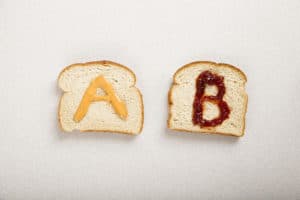
Why Design Matters to a Successful SEO Strategy
Why Design Matters to a Successful SEO Strategy
Why Design Matters to a Successful SEO Strategy
Most of my clients understand the need for design, but I occasionally get asked the inevitable question, “What does it matter what my site looks like? Isn’t SEO (Search Engine Optimization) more important?”
Whether you are a small business who is marketing your retail shop/medical practice/professional service or you are an entrepreneur launching the next unique idea, how you present it – and more importantly how your audience experiences it – matters most! You may be surprised that it matters not just to your customer, but also to the search engines.
Good Design vs. Bad Design
What is good design? What is bad design? Answering these questions seems difficult because aesthetics are subjective. So let’s first define “design”. According to dictionary.com:
de·sign: to prepare the preliminary sketch or the plans for (a work to be executed), esp. to plan the form and structure of; to intend for a definite purpose; an organization or structure of formal elements in a work of art; composition.
Design is a plan for the function of something. In the case of web design, design is the plan for how your site will function. That in itself makes it important. We often think about design as aesthetics and it is sometimes used as a synonym for style, but design is much more than that. How something looks is part of design, but it’s not everything.
A web designer’s job is to come up with a plan for your site that displays information, conveys your marketing message and brand, and ultimately gets them to do what you want them to do (like pick up the phone, or buy your product, etc). Design uses the visual to facilitate the function.
So how does design help SEO?
Design Builds Credibility
:
Recently, Google has added a site preview to its search results. Other search engines like Ask.com and Bing have experimented with this option in the past. The need for a visual preview was spurned by our nature as humans to understand things visually in fractions of the time it takes us to process words and sentences. When your site visitors open your website for the first time, the look of the site needs to convey to them “you’re in the right place”.
This visual cue is accomplished with more than just a snazzy logo and a pleasing color palette. If the purpose of your site is to sell widgets, then your site needs to convey a) we sell widgets and b) our widgets are better/cheaper/cooler than anyone else’s and c) buying widgets from our site is nicer/more fun/more beneficial than buying elsewhere. A designers job is to accomplish this through the style and the experience. Search engines know this visual cue is important and search engines like Google are working to use this concept as part of their quality indicators. In the meantime, your traffic and linkability are influenced by the style of the design.
Design builds brand recognition:
If style is the aesthetics, then branding is the experience and the relationship. Good design practices are based on consistency. People are drawn to the familiar and to the products they have relationships with. Building your brand is important no matter what size your business is because it influences the buying decisions of current, former, and potential new customers. The branding is in the details. A brand is the embodiment of all the information connected to a company, product or service. A web designer’s function is to elaborate on your brand through the experience of navigating your site. If the site is poorly planned or constructed, you cannot monetize on the traffic of your site.
Design lowers your bounce rate:
A great design plan gives you the power to guide the user to act. A poor design plan will lead to a bad experience causing the user to leave your site and continue their search. If you are following SEO best practices, chances are you tracking your bounce rate. The search engines are tracking it too. From the search engine perspective a site with a high bounce rate is a site that is either a) misrepresenting itself via its keywords or b) is providing a bad visitor experience. Either way, it takes the bounce rate into account when deciding where your site ranks among its search results.
In summary:
Spending thousands of dollars on an SEO strategy and skimping on the design of your site will achieve less than your site’s potential. Design should come before SEO. When looking for a designer, make sure you choose one that understands that style, experience, and function are necessary to put together a strong site plan.
Ready to get your project started?
Get your free consultation and pricing quote by filling out our quick ‘request a quote’ form. We’ll answer all of your burning questions and help find the right solution for your project.
Request a Quote



